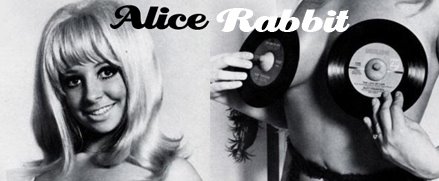 the world of electro-acoustic sound and music 1 (J-Tone, J1250)
the world of electro-acoustic sound and music 1 (J-Tone, J1250)Naughty people ! I don't think you deserve it, but, at last, it's here, in exclusivity for the reader and followers of alicerabbit, an extraordinary focus on the experimental/concrete music from Japan, ripped by Rain.
Tracklisting
1- Toshirou Mayuzumi - “Mandara with source of voice and electronic sound” (1969)
2- Yuji Takahashi + Masahiko Sato - Taklamakan (1974) [Piano, Synthesizer, Electric Piano, Prepared Piano]
3- Jōji Yuasa - "My Blue Sky #1" (1975) "In this work only clicks, pulses and the various kinds of beats induced from them, varying piches, width and their frequency of pulse are adopted. For example, I controlled successively occurring pulses of low frequency sine wave by means of triggering with the frequency of the square wave."
4- Matsuo Ohno - “Electronic Sound - Astro Boy’s b.g.m. d” (1963-66)
5- Yuji Takahashi - Time (1963)
320/RAR/RS (thanks Rain !)
1- Toshiro Mayuzumi 黛敏郎 (1929 - 1997), initially enthusiastic about avant-garde Western music, especially Varèse, but beginning in 1957 he turned to pan-Asianism for new sonorous material. Like the novelist Mishima Yukio, whose novel The Temple of the Golden Pavilion he set as an opera ("Kinkakuji", 1976), Mayuzumi opposed the westernization of Japan and tried to emphasize his native cultural identity in his work.
MANDARA for electronic sounds and voices is borrowed from the vocabulary of Buddhism, evokes the idea of the uncertainty of things here on earth. The work is divided into two sections. The first is composed basically of brief, shrill electronic impulses; toneless sounds gradually impose the sensation of deep breathing, which effects a transition to the second section of the work. This is made up of complex vocal polyphony, in which murmurs, cries, and ordinary speaking are blended with typically Japanese melodic inflections. (wikipedia + analogartsensemble)
2- Yūji Takahashi 高橋 悠治 is a composer, performer, pianist and author, who worked with Iannis Xenakis (he gave the first performance of Xenakis' Herma and Eonta). Masahiko Satoh 佐藤允彦 is a Japanese jazz pianist and composer, born in 1941. (wikipedia, discogs)
3- Jōji Yuasa 湯浅譲二 (1929- ) In 1951, he founded with the composer Tōru Takemitsu and other contemporary artists and musiciansJikken Kōbō (Experimental Workshop), an organization dedicated to the exploration of new directions in the arts, including multimedia. He worked at Boulez's IRCAM. "My Blue Sky No.1," made at NHK electronic music studio, is his final electronic music piece. (wikipedia, jazzloft)
4- Matsuo Ohno 大野松雄 (born 1930), perhaps best known for his incredibly prescient sound-design work on the “atom” (better known as “astro boy”) cartoons made between 1963 & 1966. Before the era of synthesizer, he used mainly transmitters and tape recorders, echo and various tape editing technology freely. He used marimba sound recorded on an open reel tape to generate astro boy's footsteps. He rubbed the tape against heads of open reel deck, moved it back and forth manually, then put some echoes and other effects onto the sound came out by doing 'open reel scratch'. creating just a few second of the sound required an immense amount of time and effort. (mimaroglu)
5- Yuji Takahashi'sTime is a sound-collage piece intended to portray 24-hour cycle in the life of a “salaried worker”. Using what appear to be field recordings of both industrial and natural origins, he combines them with playing on a porcelain percussion instrument invented by Junosuke Okuyama (who also worked with Toru Takemitsu). It’s another impressive track, again beautifully recorded, wherein the sequence of abstract, apparently unrelated sounds manage to convince the listener of their poetic logic. Whether or not the salaried worker would care is another question. (http://www.bagatellen.com/archives/reviews/001014.html)

3 commentaires:
Merci, très belle pièce. Par contre il est de + en + difficile de télécharger avec rapidshare.
LD
mwah!
That track list is so helpful. xo
~ Herman Swan
Enregistrer un commentaire